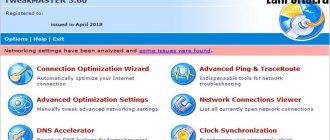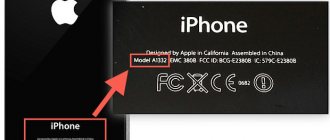In 2022, the vast majority of people will not be able to imagine their lives without the Internet. We use this huge computer network all the time: while working, when looking for any information or exchanging data with employees, while relaxing, when we entertain ourselves with games or watching interesting films/series and other things.
No matter how trivial it may be, today we really can no longer imagine the world without such a privilege, which allows us to virtually instantly exchange any information with a person located on the other side of the world. At one time, this opened up enormous opportunities in science, and at the moment the Internet continues to develop.
But many are probably interested in the question: where did it all begin, where and when did phones first have access to the network? After reading this article, we recommend that you familiarize yourself with our previous material, where we talked in more detail about what mobile communication technologies are, what types of them exist and how they differ.
This time we will dwell in detail on GPRS. Let's look at the architecture, operating principle and compare the technology with earlier and later generations of mobile telephony.
What is GPRS
The abbreviation “GPRS” refers to an add-on to GSM technology (aka “2G”), which brought a lot of improvements and allowed older phones to have access to the Internet. At least devices with GPRS support could already receive emails and generally exchange data literally over the air, which a few decades ago seemed like nonsense, especially for the common population who had nothing to do with technology.
GPRS stands for “General Packet Radio Service”, which translated from English means “radio communication where packet data transmission is carried out. Tariffing here was calculated according to a new principle and took into account only the amount of information received or sent, and not the time spent on the network.
As already noted, GPRS is precisely an add-on over GSM. This is not a separate technology, but a service that is based on the development of a worldwide digital cellular communications standard. Structurally, it is divided into two parts: BSS and GPRS Core Network. The first is a system in which many services are concentrated to support the operation of batch mode. The second is called the backbone network.
GPRS structure in the case of a mobile phone.
The BSS, in turn, includes two more blocks: PCU and BTS. The first - Packet Controller Unit - is used to directly control packets between the recipient and the sender, the second - Base Transceiver Station - is an encoding device and is needed for correct interaction with the TCP/IP protocols, on the basis of which information is exchanged in GPRS between SGSN and GGSN.
Now to what SGSN and GGSN are. The SGSN component stands for subscriber service node and, as the name suggests, it is directly involved in organizing data transmission. It is a kind of connection point for all BSS stations and many other services. In simple terms, the SGSN acts as a switch.
GGSN or GPRS Gateway Support Node (from English “gateway support node”) is used to route outgoing and incoming traffic between the subscriber and the SGSN switch. In general terms, the composition of BSS ends here, and the second part of GPRS consists of DNS (domain name system) and many gateways (special software for organizing data transmission) for external networks: X.25, Internet, etc.
Usage
To use this technology, a person must have a mobile phone . The user reviews packages from the operator and chooses the most profitable one for him. For each day or month, a certain amount of traffic is allocated, which is consumed when the subscriber uses the Internet.
This technology can be used to enable connections based on Internet protocols supporting a wide range of commercial applications. It allows you to send and receive small packets and large amounts of data over mobile phone networks. Before data is sent, it is broken into separate blocks and sent through the main network and radio. The data is then collected at the end from the recipient.
JPRS also allows you to use mobile communications while roaming
What is the difference between GPRS and 2G and 3G?
Above, we tried to at least partially introduce you to the structure of GPRS in understandable human language, but if you still managed to get tired of that huge number of incomprehensible words and abbreviations, then everything will be even simpler here. Let's now talk about how GPRS differs from other mobile telephony technologies, which are classified as 2G and 3G. We will not compare architectures and operating principles, but will only touch upon interesting facts arising from this.
GPRS and 2G (GSM)
First, let's look at a comparison of the GPRS add-on (often referred to as “subgeneration” 2. - a transitional phase between 2G and 3G) with the main international representative of 2G - GSM.
Main differences:
- GPRS has greater support for frequencies: to the 900 and 1800 MHz that GSM has, another 850 and 1900 MHz are added.
- A different type of connection. For GSM: circuit-connected network, for GPRS: packet-switched network.
- Another pricing principle. In GSM, billing is based on the amount of time the subscriber has been online (connection duration). For GPRS, the calculation is based on the amount of data transferred.
- GSM does not have the ability to directly connect to the Internet, but GPRS does!
- The ways to access the channel are slightly different. GSM is based on the classic TDMA model, where the user is allocated a certain time period during which he can transfer data. GPRS has the ability to allocate several such intervals to the same subscriber.
- GPRS has received support for MMS (multimedia messaging), while GSM can only be content with regular SMS.
- The connection speed when connecting to GPRS will be higher. The throughput of this add-on is in the region of 14.4 - 115.2 kbps. For GSM, this characteristic at its peak is only 9.6 kbit/sec.
GPRS and 3G (UMTS, CDMA, WCDMA)
Among the main representatives of third generation mobile networks are UMTS, CDMA and WCDMA. HSPA can partly be included in the same list, but this technology, like GPRS, is also transitional, only between 3G and 4G. Structurally, GPRS and UMTS are very similar to each other, since both standards are add-ons over GSM. UMTS is sometimes even called “3GSM”, emphasizing its belonging to third generation networks and its great similarities with GSM.
Below we will look at the main differences between GPRS and UMTS:
- A huge difference in data transfer speed is observed in favor of UMTS. For a 3G representative, this figure is approximately 384 kbps, which is already enough for a more or less comfortable surfing on the Internet. And with the availability of the HSPA extension, the maximum possible throughput increases to 7.2 Mbit/s.
- GPRS is based on the principle of time-based channel access (TDMA), UMTS, in turn, has a more advanced CDMA approach in this regard (and its improved version W-CDMA), which has a positive effect on data transfer speeds and reduces delays.
- GPRS only supports UDP protocol, while UMTS supports both UDP and TCP.
- The average delay when using GPRS is 1.3 seconds when exchanging packets, while with CDMA, on which UMTS is based, we have only 300-400 milliseconds (and less in W-CDMA).
Connecting the system on a personal phone
Several ways:
- connection in “default” mode from your phone operator
- manual connection
- connection via mobile operator service by phone
- connection through the operator’s communication salon
Connection in the “default” mode from the operator does not require solving problems or any actions for the subscriber. Manual connection is required for phones where manufacturers have not taken into account automatic system configuration. Connecting through the service of a cellular operator involves calling a specific number of this operator. Information about the phone number can be found on the operator’s website, contact a service center representative there, and receive a package of settings from him automatically, sent to your phone. If the procedure does not work, you can manually configure the system at the prompting of a service center specialist.
Methods for connecting the GPRS system to a mobile phone.
How to enable GPRS on an Android device
On any device running the Android operating system, you can manually set network connection parameters. If in normal settings you can only choose between generations (2G, 3G, 4G, etc.), then in a special engineering menu there is the possibility of more detailed settings:
Step 1: Open the Phone app on your smartphone and expand the number pad.
Step 2. Enter the code “*#*#4636#*#*” to go to the engineering menu.
Step 3. In the window that appears, select the “Phone Information” section and go to it.
Step 4. Find the line “Set up your preferred network type:” and click on it to expand the full list.
Step 5. Select “GSM only” and close the menu.
You won’t find GPRS technology itself in the list, since it is an add-on to GSM (like, for example, HSPA) and with a 99% probability it will work by default on any modern device. To check this, just try going online.
Transceiver channel of the system
A cellular subscriber has its own channel, consisting of a modem in a mobile device. The GPRS system has its own communication channel. Configuring both channels relative to each other makes it possible to exchange and transmit data.
Mobile phone communication channel, modem
Data transfer takes place in the service mode of the telecom operator to which the subscriber belongs.
Mobile 4G Internet: WiMAX
It is a wireless technology for high-speed data transmission over long distances for a wide range of devices. WiMax technology is based on the IEEE 802.16 standard; the throughput of one WiMax base station with 6 sectors and a 20 MHz bandwidth is 180 Mbit/s. It should be noted that there is fixed and mobile WiMax. We are interested in the mobile implementation, the maximum connection speed of which is 30 Mbit/s, and the Internet is available even when driving at speeds of up to 120 km/h.
WiMax mobile Internet has the functions of roaming and “seamless” switching between base stations when the subscriber moves. Mobile WiMAX can be used to serve fixed-line users. There are already two WiMax networks operating in Moscow, represented by the Yota and Comstar brands. Mobile WiMax is perhaps today the only worthy alternative to wired communication.
Prospects for packet data transmission
The actual volume of transmitted information is increasing, so the companies MTS, MegaFon, Beeline, Tele are interested in promoting GPRS technology. Phones with such a system are in demand in industry. The technology is supported by iPhone 5/5S.
Important! Modern laptops, PDAs, PCs provide the ability to connect phones. Compact models are offered on the market.
Among the built-in cards, Nokia D211 stands out; it is intended for laptops. The user needs to create a wireless local network. It makes it easy to send messages to other users. It supports a constant network connection and is superior to the LTE standard.
The features of GPRS Internet are discussed above. It describes how to connect the service, its advantages and disadvantages. The technology has a future; mobile operators are working to improve GPRS.
Sources
- https://compress.ru/article.aspx?id=9745
- https://www.mnogo-otvetov.ru/computery/chto-takoe-gprs-v-telefone-i-kak-im-polzovatsya/
- https://AndroidLime.ru/gprs-connection-standart-smartphone
- https://SetPhone.ru/stati/chto-takoe-gprs-v-telefone/
- https://vpautine.ru/internet/gprs
- https://mobilkoy.ru/chto-takoe-gprs-v-telefone-i-kak-im-polzovatsya-chem-otlichaetsya-gps-ot-gprs
- https://www.gprs-gsm.ru/gprs_all.php
Story
The standard became available in 1969, but ordinary users only saw progress in 1991. Dial-up Internet attracted attention, but the potential was not realized. The 2.5G standard opened up packet data transmission. Then scientists announced voice channels. Consumers could transmit signals quietly, and traffic would be taken into account.
Review and configuration of the D-Link Dir-320 modem
Important ! With the advent of the 2.75G standard, the possibilities have expanded somewhat. The speed has increased and the number of errors has decreased. Users were able to make settings.
Upon receipt of a damaged data packet, decoration was performed. The signal reception time decreased, and it became possible to send images via streaming.











